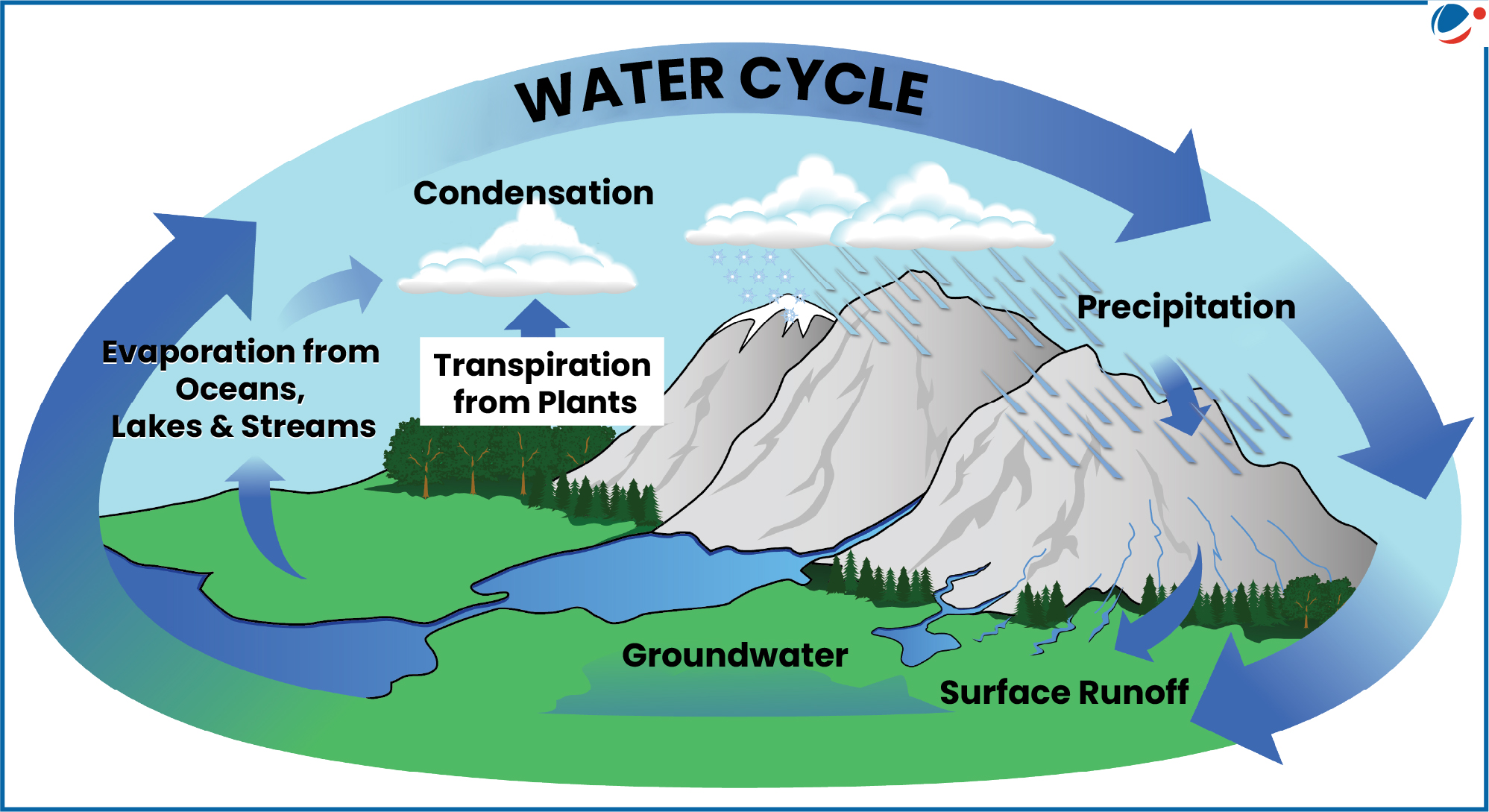Global Water Monitor summarises the state of global water cycle, identify key trends and analyses major hydrological events.
Water Cycle

- Water cycle is the movement of water in all its phases — solid, liquid and gas — within the Earth and atmosphere.
- Liquid water evaporates into water vapor, condenses to form clouds, and precipitates back to earth in the form of rain and snow.
Key Findings (State of Water Cycle)
- In 2024, Water-related Disasters caused over 8,700 deaths, displaced 40 million people, and inflicted more than US$550 billion in damages.
- Soil water showed strong regional contrasts, with extreme dryness in South America and Southern Africa and wet conditions in West Africa.
- Lake and reservoir water storage worldwide declined for the fifth year in a row.
Impact of climate change on water cycle
- Intensification: Climate change had intensified water cycle by up to 7.4%.
- Severe Storms: Warmer air can hold more water vapour (7% more moisture for every 1 degree Celsius temperature rise), increasing precipitation intensity, duration and frequency.
- Droughts: Temperature rise causes more evaporation, drying out soils, increasing drought risks.
- Extremely dry months have become increasingly common in recent decades.
- Sea-level rise: Thermal expansion and melting ice is contributing to sea level rise, resulting in oceanic acidification and affecting marine life.



